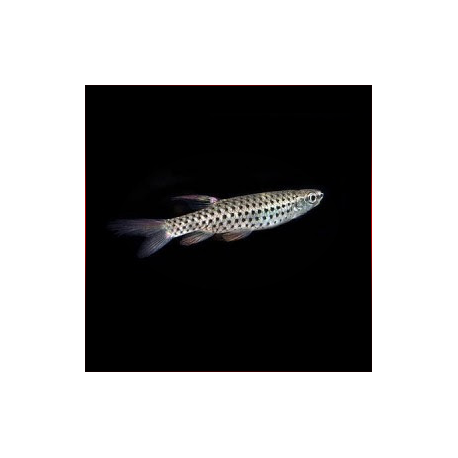More info
Datasheet
| Minimum Tank Size | 60 litres / 15.85 US gallons |
| Maximum Size | 4.2cm / 1.65inches |
| Temperature | 20°C / 68.00°F - 28°C / 82.40°F |
| Hardness | 1.01dgH / 18ppm - 8.01dgH / 143ppm |
| pH | 4.0-7.0 |
General Description
The Copella Callolepis, commonly known as the Callolepis, is often misidentified as its congeners C. nattereri or C. meinkeni. It was previously considered synonymous with C. nattereri and C. cf. meinkeni before being revalidated. Easily distinguished by the presence of a dark lateral stripe on each side of the body, C. callolepis showcases unique characteristics such as black triangular markings and distinct color patterns.
Aquarium Setup
For optimal maintenance, it is advisable to keep Copella Callolepis in a densely-planted aquarium or paludarium with overhanging vegetation, providing roots or branches. A tank setup with floating vegetation and dried leaf litter creates a natural habitat and offers cover for the fish. This species prefers dim conditions, spending most of its time in the upper water column. Ensuring well-oxygenated water with slight surface agitation is essential, and stable water chemistry is necessary to prevent any stress on the fish.
Behaviour
Callolepis exhibit peaceful behavior but may not be suitable for a general community aquarium. When housed with similarly-sized characids, gasteropelecids, or smaller catfish, they thrive well. It is recommended to maintain a mixed-sex group of 8-10 specimens, including other schooling fish to enhance the natural spectacle. Male Callolepis showcase vibrant colors and engaging behaviors as they compete for female attention.
Feeding and Diet
Copella Callolepis is a micropredator, feeding on tiny invertebrates and zooplankton in the wild. In captivity, they readily accept dried foods but should also be fed small live and frozen fare such as Artemia nauplii, Moina, and grindal worms. Offering small insects like crickets or fruit flies can also supplement their diet, ensuring a balanced nutritional intake.
Reproduction & Dimorphism
Males of Copella Callolepis grow larger, develop more extended fins, and display intense colors compared to females. Female Callolepis have rounder bodies, especially evident when gravid. Breeding these fish involves intricate courtship displays by males, leading to successful reproduction. Rearing fry alongside adults requires specific tank conditions with suitable cover for the young to thrive.
Habitat and Distribution
The distribution of Copella Callolepis is primarily centered around the central Amazon region in Brazil. While its type locality is simply listed as 'Amazon,' detailed records are scarce due to historical confusion with closely-related species. These fish are often found in dimly lit, vegetated areas of slow-moving waters, reflecting their habitat preferences in the wild.

